MARIANI’S
Virtual
Gourmet
January
29, 2017
NEWSLETTER

"Eve"
By Galina
Dargery (2016)
IN THIS ISSUE
HILTON HEAD
BOUNDS BACK
By John Mariani
NEW YORK CORNER
ANGUS CLUB STEAKHOUSE
By John Mariani
NOTES FROM THE WINE CELLAR
PINOT NOIR THE
SOKOL-BLOSSER WAY
BY John Mariani
❖❖❖
HILTON HEAD, SC
BOUNDS BACK
By John Mariani
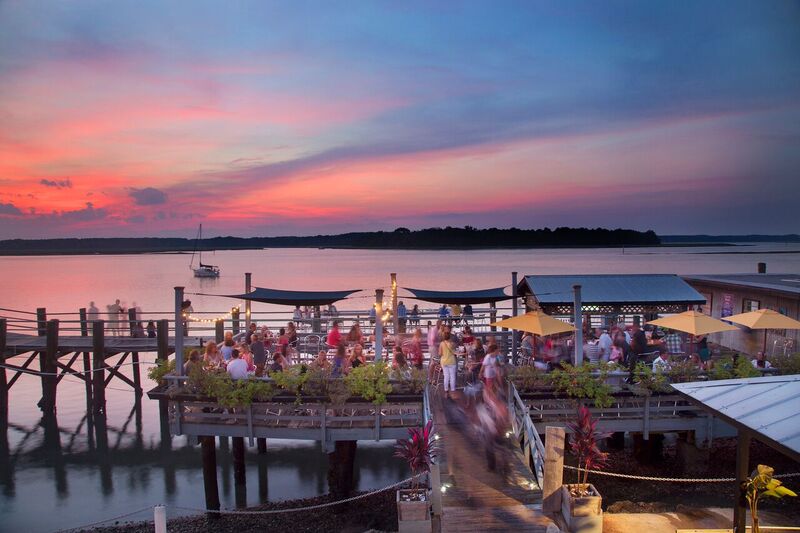
Hudson's on the Dock
Not long after I visited Hilton
Head, SC, and wrote about its attractions last fall,
the area was hit hard by Hurricane Matthew and
destruction was widespread, not least closing road
access to the island for days.
Friends who lived there said
everyone and everything was affected by the Category
Two storm, and most restaurants were out of business
for months. But
now I am told Hilton Head is coming back to
vitality, and all the restaurants I visited there
are again open. So, since it’s now a very good time
to head south, I can publish what I’d originally
planned for last autumn. Hope you enjoy your time
there.
HUDSON’S ON THE DOCK
1 Hudson Road
843-681-2772
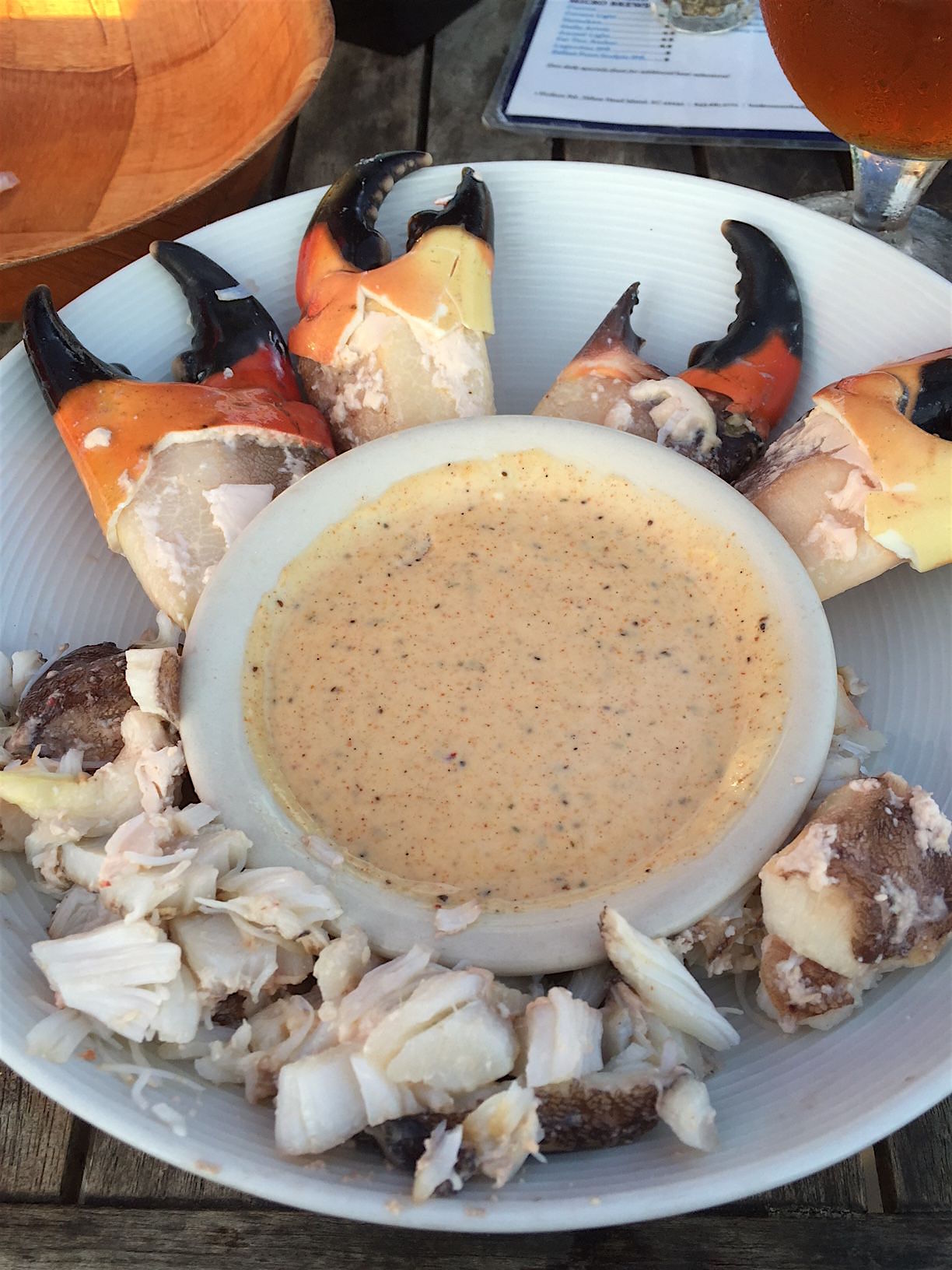 Everybody
knows and loves Hudson’s. Since 1967 on what was
once Hudson’s Oyster Factory on Port Royal
Sound, this sprawling second-generation seafood
house’s enormous popularity is owed to the
dogged commitment of the Carmines family to
obtain the finest seafood up and down the East
Coast at whatever cost.
Everybody
knows and loves Hudson’s. Since 1967 on what was
once Hudson’s Oyster Factory on Port Royal
Sound, this sprawling second-generation seafood
house’s enormous popularity is owed to the
dogged commitment of the Carmines family to
obtain the finest seafood up and down the East
Coast at whatever cost.
Those costs are kept down by
the Carmines owning their own fishing fleet and
refrigerated trucks that contract fisherman from
Charleston to northern Florida to bring in a wider
array of fish than most anywhere else in the
entire region—swordfish, mahi mahi, grouper, tile
fish, trigger fish, vermilion snapper, black sea
bass, crabs and lobsters, all of it processed
in-house, so that Hudson’s each year goes through
250,000 raw oysters and 70,000 pounds of fresh
shrimp, serving up to 1,200 guests a night indoors
and out. They built the Shell Ring Oyster Company
nearby to guarantee sustainable product.
The field marshal who oversees
these logistics and tactical considerations is
Brian Carmines, originally a New Englander, who
with his wife, Gloria, established the David M.
Carmines Memorial Foundation to raise money through
seafood festivals for MD Anderson Cancer Research
Center, the Island Recreation Scholarship Fund and
the American Cancer Society.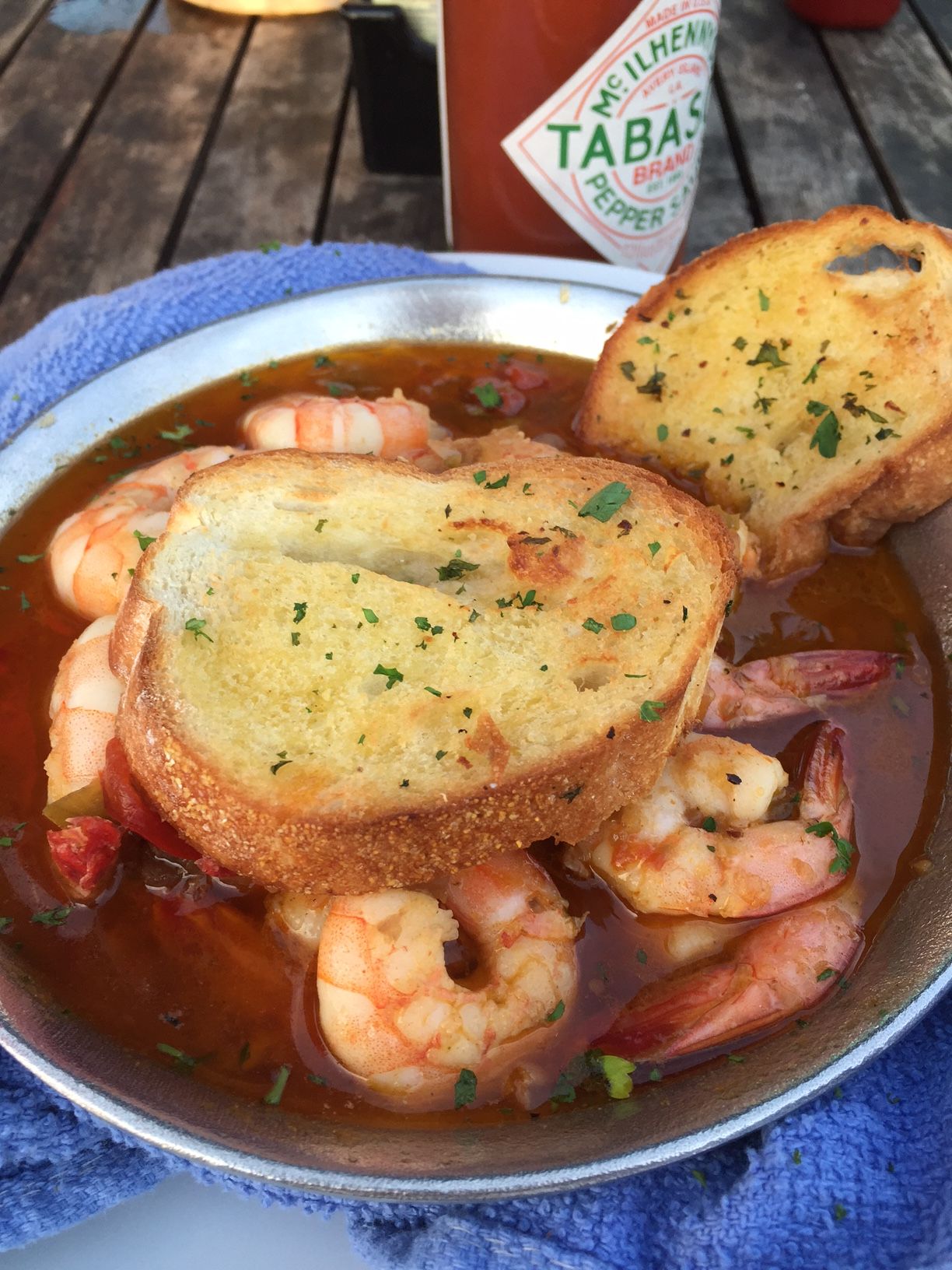
Most
nights
of the week, you’ll wait for a table at Hudson’s,
but you wile away the time reading the huge
newsprint menu while nursing a dark and stormy or
a cold beer as the suns nestles below the Sound
and live entertainment begins outdoors. You might
even see a a green flash on the horizon.
Stats and history go only so
far to explain Hudson’s popularity, which is
really based on all that high quality seafood
prepared expertly by a brigade of cooks who have
perfected everything from the second-by-second
timing of cooking sweet fresh barbecued shrimp (right) till
tender in a rich stock with buttered baguette
($12) to the proper seasoning with roe of she crab
soup ($4.95-$6.25).
I had a platter of jumbo stone crabs
(market price) as meaty as they come, with a light
mustard sauce, and there was next to no filler
binding the fat, pan-sautéed crabcakes ($12).
The menu goes on to flounder
stuffed with more crabmeat ($22), marvelous broiled
scallops ($25) and almond-crusted grouper with a
citrus beurre blanc ($25). And, at dinner’s end,
there’s a superlative sour-sweet Key lime pie
($6.50). The
merely serviceable beer and wine lists are nothing
to rave about, but when you feed so many people,
there’s little time for connoisseurship.
Hudson’s
is
one of those places, like Union Oyster House in
Boston, Joe’s Stone Crabs on Miami Beach, and the
Sardine Factory in Monterey, that seem essential stops
for anyone visiting Hilton Head. And for
those who have been even once, just the mention of
Hudson’s is enough to bring a smile to their
faces.
Open daily
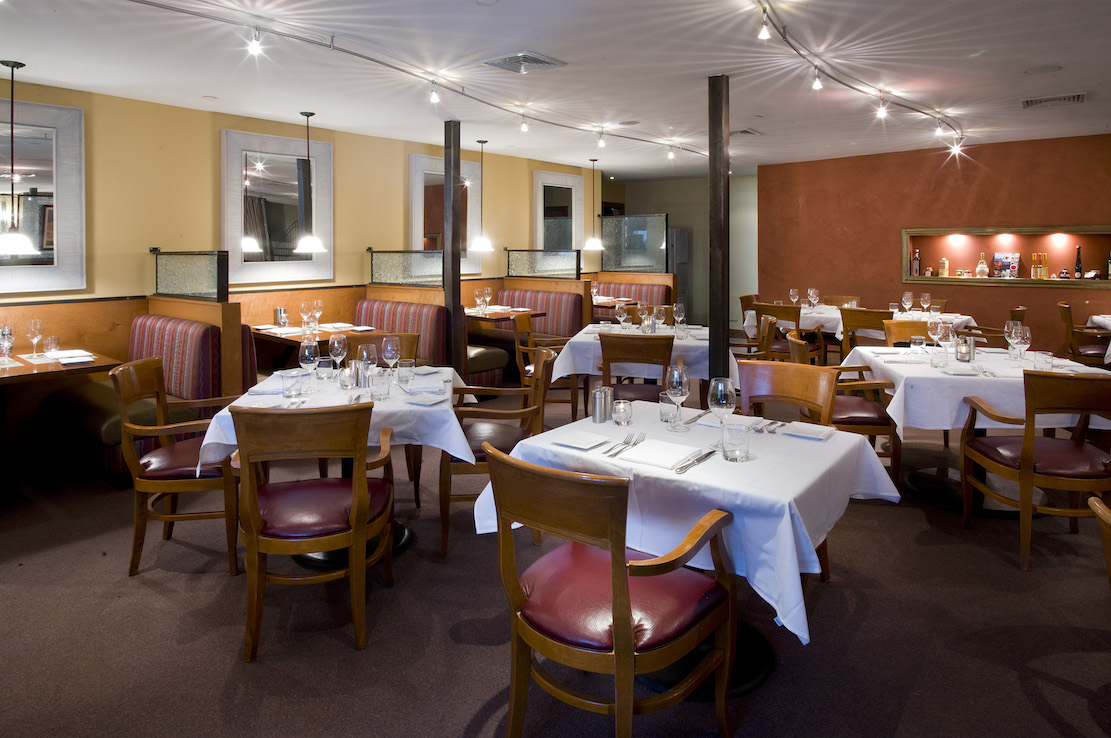 MICHAEL
ANTHONY’S
MICHAEL
ANTHONY’S
37 New Orleans Road
843-785-6272
I was told by HH friends that fine
Italian food was not easy to come by on the
island—with a single exception: Michael
Anthony’s, opened by Tony and Becky Fazzini in
2002 and evoking the Italian eateries of their
upbringing in Philadelphia, although, frankly,
Philly is not exactly known for fine regional cucina
Italiana.
Precedents aside, the Fazzinis and chef
Chris Johnson are doing the kind of Italian food
difficult to come by anywhere in South Carolina.
It’s a handsome restaurant,
easy to move around in, with very fine, soft
romantic lighting against brick walls and white
tablecloths, and a responsible decibel level. Service
is effusive without being intrusive, 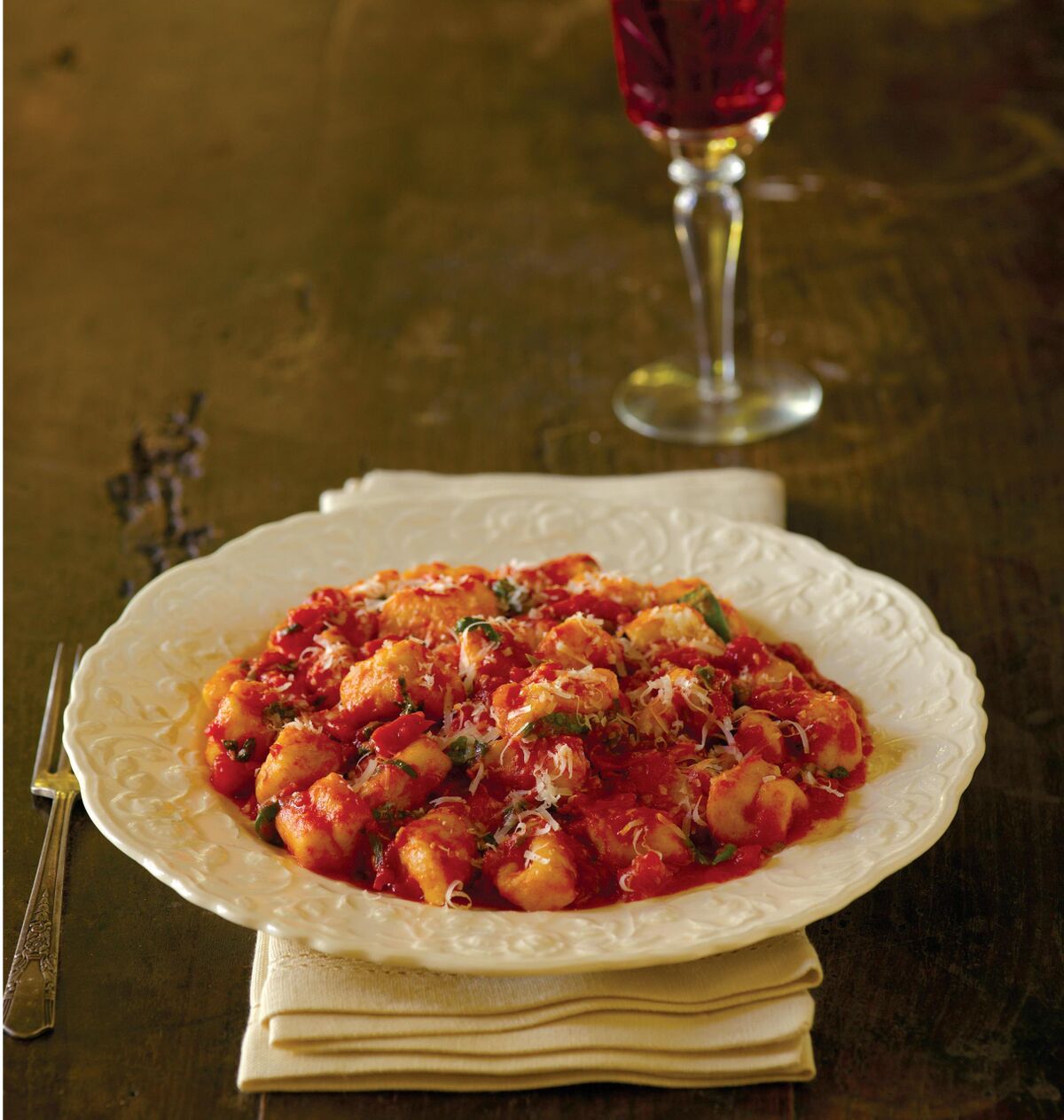 and menus
change with the season. The wine list is
unremarkable, with most mark-ups per bottle about
200 percent.
and menus
change with the season. The wine list is
unremarkable, with most mark-ups per bottle about
200 percent.
My friends and I began with a
salad of watermelon with toasted pinenuts,
arugula, aged balsamic vinegar with ricotta
salata cheese, followed by three good pasta
dishes. Spaghetti with crab was a natural choice
for a Low Country rendition, while gnocchi
cacio e pepe with cheese and cracked black
pepper was as simple as it was simply wonderful; porcini
tagliatelle was moistened just enough with a
wild mushroom demi-glace.
Portions
are very generous here, and you’re likely to take
some home, including a bistecca
alla Nino
Borghese, where lamb gained flavor from a
black truffle and amarena cherry reduction. Tender
involtini of
veal were lush with a tomato cream.
For dessert the sformato di
cioccolato was superior to tiramisu and
panna cotta.
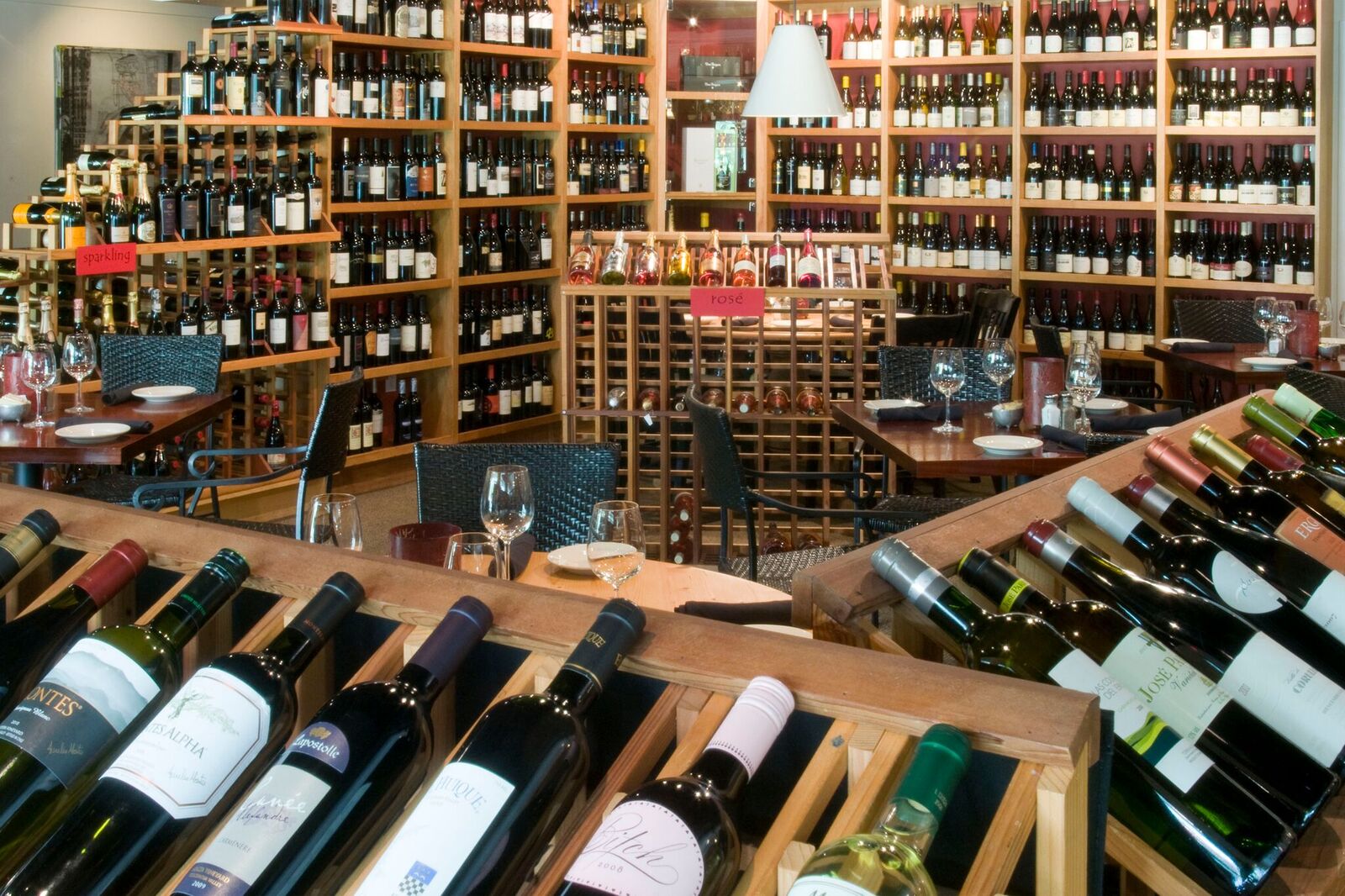 THE SAGE
ROOM
THE SAGE
ROOM
81 Pope Avenue
843-785-5352
Chef-owner Matt Jording is not trying to
please everyone, for his cooking is focused with
a robust excellence and beautiful presentation
that command the attention of a serious
gastronome, all without the slightest
pretension.
Open only for dinner, there are
no hamburger or fried fish sandwiches on the menu. What
there is shows that Jording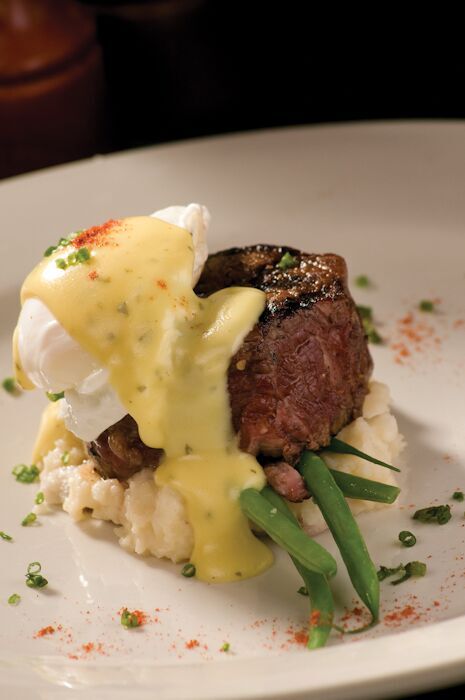 can cook with finesse
both in classic and modern styles, beginning with
an excellent three onion soup ($8) of smoked
provolone that gives an added nuance Gruyère lacks
to the caramelized onions and goat’s cheese crostini.
can cook with finesse
both in classic and modern styles, beginning with
an excellent three onion soup ($8) of smoked
provolone that gives an added nuance Gruyère lacks
to the caramelized onions and goat’s cheese crostini.
Since it’s difficult
for me ever to turn away from South Carolina’s
great shrimp, I ordered a dish of them, sautéed
and set over al dente angel’s hair pasta ($27)
with the shrimp lightly sautéed then tossed with
bell peppers, basil and garlic over a roasted
tomato sauce sprinkled with good
Parmigiano-Reggiano. On the meat side of the menu
I found a well-marbled, well-seared ribeye of beef
first rate ($40), a 22-ounce giant sided with a
bleu cheese-lavished, sage-scented potato gratin
served with crisp green beans.
The
dining room is comfortably casual but not a place
I’d arrive in sporting cut-off shorts and
flip-flops. A ten-person bar functions as a chef’s
table that wraps around an open kitchen. The
well-lighted wine wall is an impressive part of
the design, and the wine list is one of the better
ones on the island, with many out-of-the-ordinary
labels like The Stump Jump (Australia) and Ernie
Els Big Easy (South Africa), among a number of
well-known, largely Californian, names like La
Crema, J. Lohr, and Rex Hill.
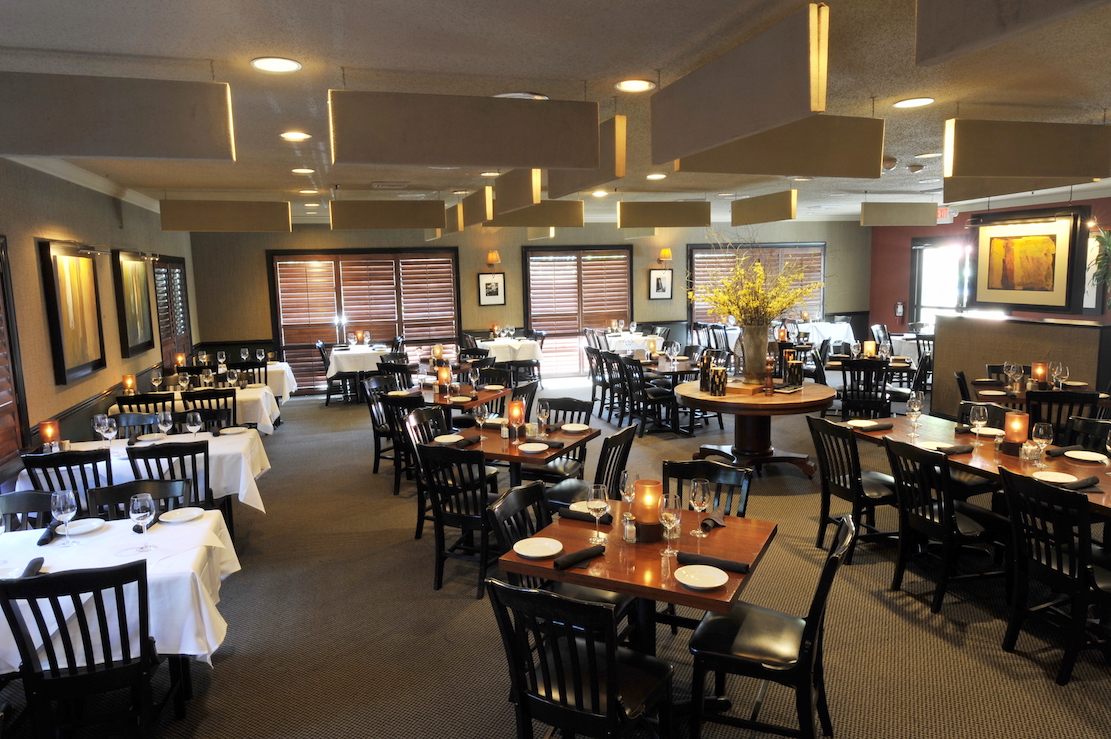 RED FISH
RED FISH
8 Archer Road
843-686-3388
Seasonality, amply bolstered by the
HH Farmer’s Market, drives chef Chaun Bescos’s
menus at Red Fish, especially since he grew up
on an organic farm in Hawaii, a blessing that
shows up in dishes like seared ahi poke ($13)
and Asian pork meatballs ($10). So
you can be sure that the greens in his salads
left their beds that morning. 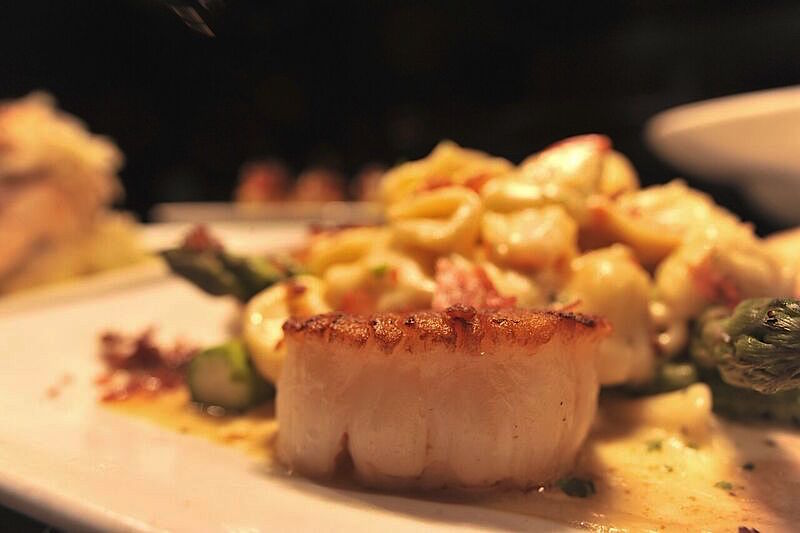
If
anything, the menu is too large—20 appetizers,
soups and salads, 12 entrees and 10 desserts, many
involving a lot of ingredients. But
he’s not about to compromise sparkling fresh
grouper (market price) or a Heritage Farms
Berkshire pork chop ($33), which he brines in
maple syrup and serves impeccably cooked with
house-cured bacon grits, sautéed broccolini and
red-eye gravy—a convincing argument for how far
Southern traditional food has been brought in the
last few years.
Red Fish is a great-looking
spot, airy with well spaced tables, and an
attached wine shop and a thousand bottles in
inventory. Sturdy
chairs, white tablecloths, polished woodwork and
hanging lights are wholly appropriate for the kind
of casual style that also bespeaks good taste all
around.
Open for lunch
Mon.-Sat.; Dinner nightly.
By John Mariani
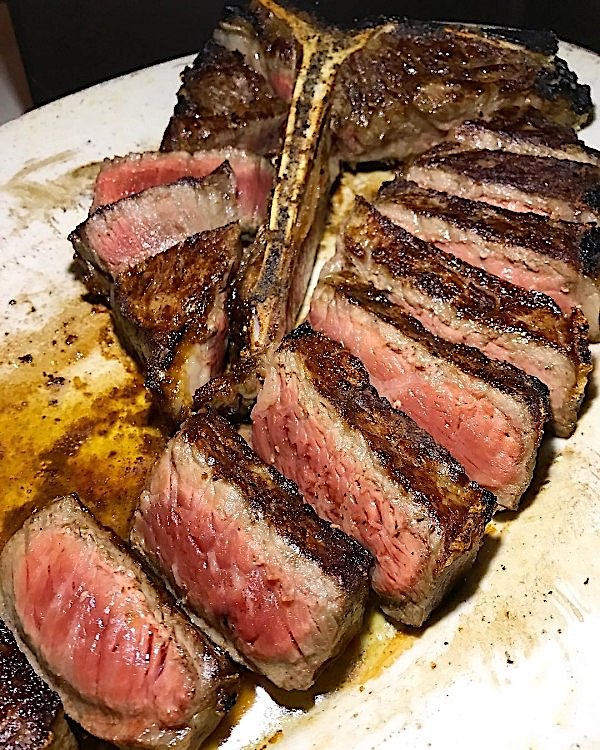
ANGUS CLUB STEAKHOUSE
212-588-1585
I’m sure there are many
diners, New Yorkers and out-of-towners, who
bounce from one steakhouse to another, but
there also seems to be a good deal of avid
fidelity to one or the other. In
Midtown Manhattan, where you can choose from
about 20 high-end steakhouses within a
ten-block area, you can have your choice of
old school, like Palm or Gallagher’s, swank
spots like Strip House or NYY Steakhouse,
or—though it’s hard to fathom why—out-of-town
chains, like Capital Grille and Ruth’s Chris.
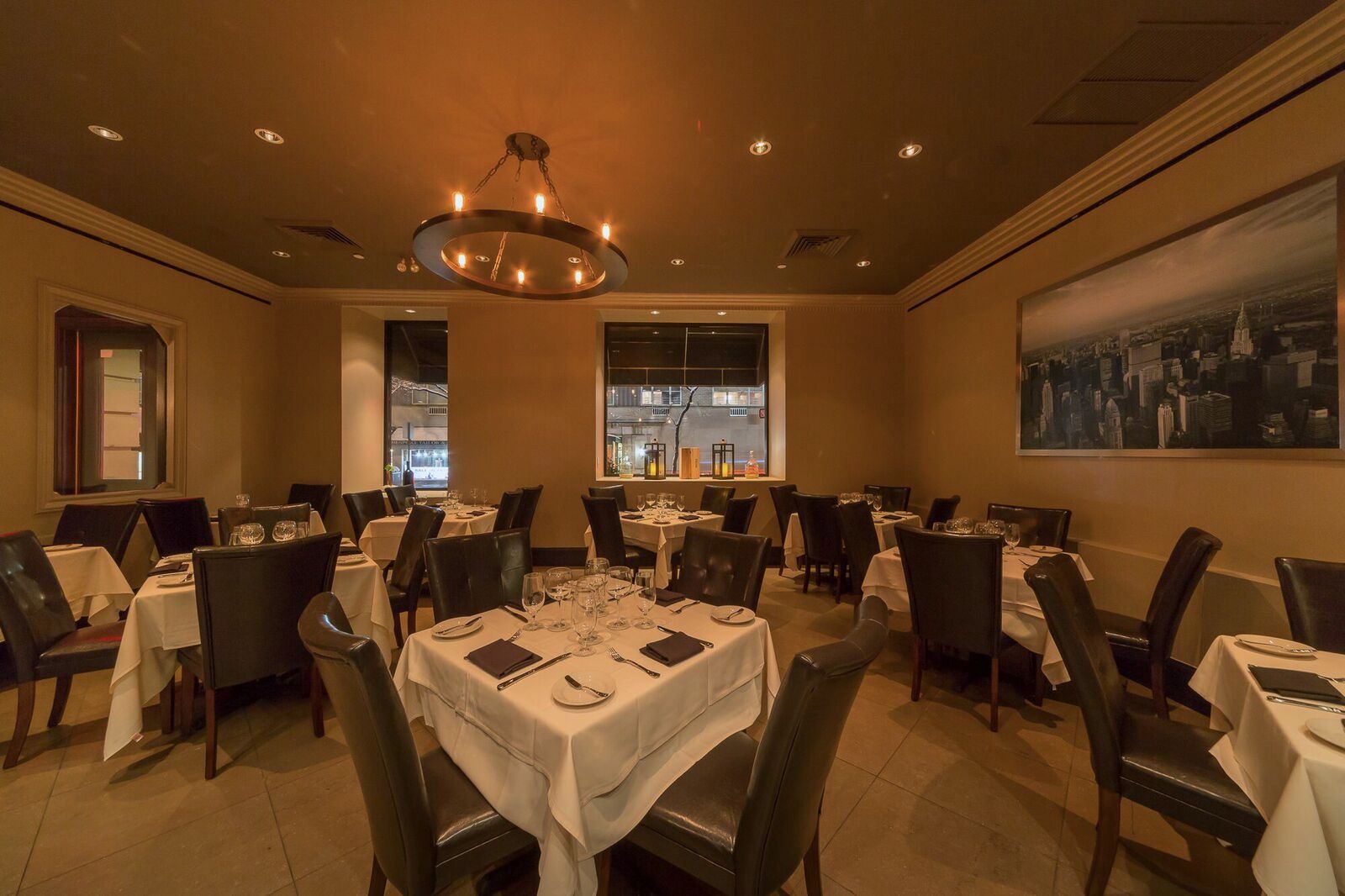
Angus Club, on East 55th
Street, has, over the past three years, built a
loyal customer base upon several factors that go
beyond the excellent food: The service, under
partner Zef Makaj, goes well beyond the
rudiments, without any of that “who-gets-what?”
macho so often the case at places like Smith
& Wollensky and Spark’s. In
fact, Angus Club is one of those steakhouses
that goes out of its way to appeal to women; you
can see it in the way they’re taken care of when
dining with their friends. It’s
the kind of a place that goes a bit further in
trying to please guests, with $1 oysters at
happy hour and a three-course fixed price Sunday
dinner with a glass of wine at $65.
There are also several
private dining rooms downstairs (below),
done in various decors, for parties that
management is happy to work very closely with to
insure a desired ambiance and privacy. Upstairs
(right)
is the main dining room, not very large, with a
well-populated bar to the right, whose own décor
veers from the usual clichés of dark wood,
wainscoting, and ocher walls; instead, it’s a
trim space, with very sturdy, comfortable brown
leather chairs, a mural of the NYC skyline, and
that’s about it.
At night the lighting could be warmer,
less flat; it’s not a quiet room but the sound
level is reasonable enough for conversation. White
tablecloths, black napkins, and good thin
stemware complete the picture.
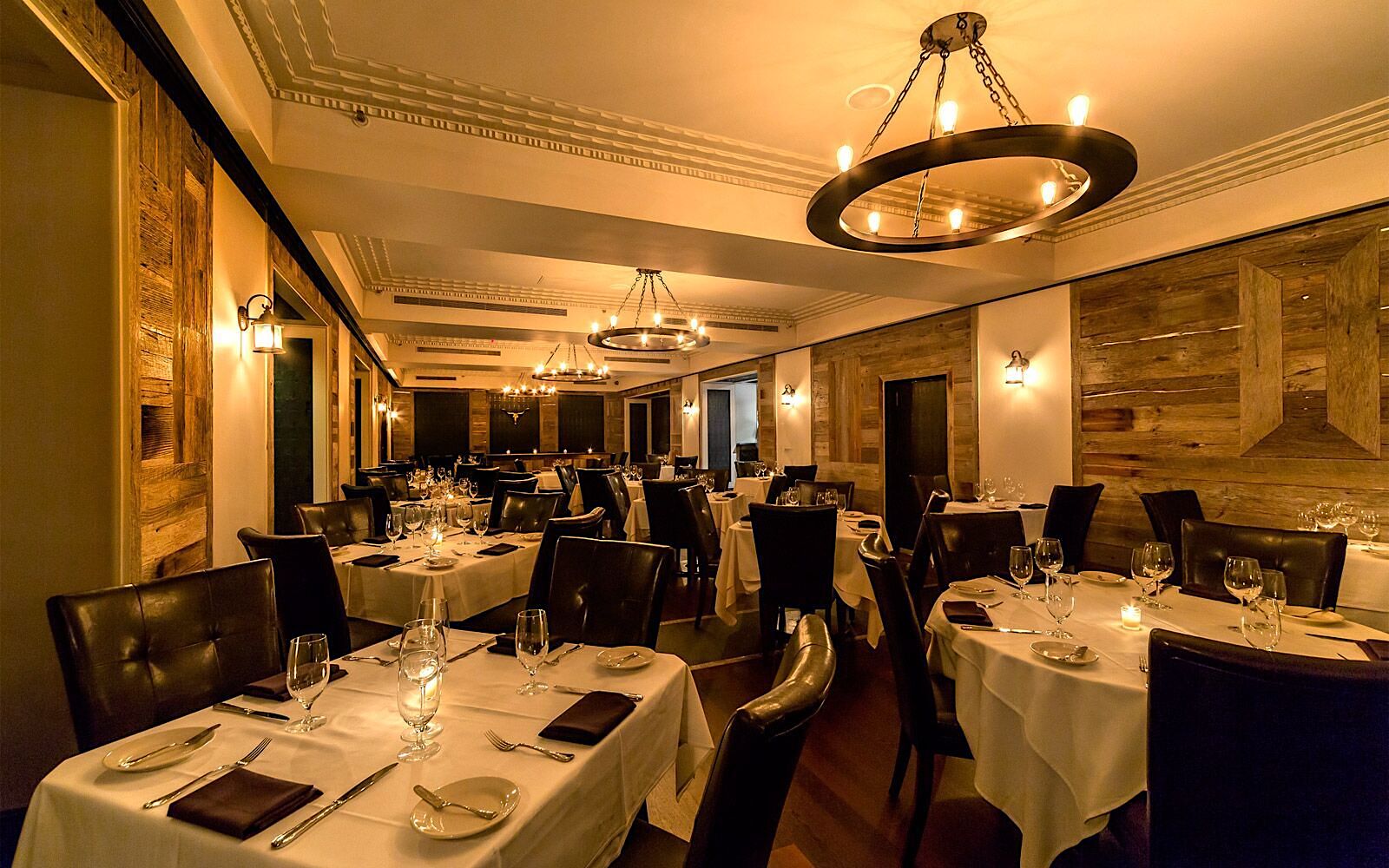 The
menu at Angus Club will win no points for
innovation, for it follows the proven formula of
the NYC steakhouse, particularly that of Peter
Luger. The
beef is all USDA Prime and chef-partner Edward
Avdyli ages his for 35 days, serving it with a
good degree of char when asked, as did I. The
quality of the other ingredients is also high.
For that reason I stayed simple on my most
recent visit, opting for the jumbo crabmeat
cocktail ($27.95),
which lived up to its name—all jumbo lump
crabmeat in a generous portion. And
while that same jumbo crab was involved in the
six-ounce crabcake ($24.95, also as a 10-ounce
main course at $39.95), there seemed at least as
much bread filler as there was meat, when the
correct balance should be 99 percent of the
latter and next to none of the former.
The
menu at Angus Club will win no points for
innovation, for it follows the proven formula of
the NYC steakhouse, particularly that of Peter
Luger. The
beef is all USDA Prime and chef-partner Edward
Avdyli ages his for 35 days, serving it with a
good degree of char when asked, as did I. The
quality of the other ingredients is also high.
For that reason I stayed simple on my most
recent visit, opting for the jumbo crabmeat
cocktail ($27.95),
which lived up to its name—all jumbo lump
crabmeat in a generous portion. And
while that same jumbo crab was involved in the
six-ounce crabcake ($24.95, also as a 10-ounce
main course at $39.95), there seemed at least as
much bread filler as there was meat, when the
correct balance should be 99 percent of the
latter and next to none of the former.
Baked clams ($17.95) were
plump and nicely seasoned, and, according to the
oyster connoisseur at our table, the bivalves
were of superlative quality, icy, impeccably
fresh and nicely briny. Porterhouse ($63.95 per
person), as elsewhere, is served for two or more
people, and it came perfectly cooked and sliced
without losing any heat (the plates are red
hot). The
meat itself had the right minerality and was
exquisitely juicy. The ribeye ($55.95) was an
even juicier, fattier cut, and you’ll probably
take a good deal of it 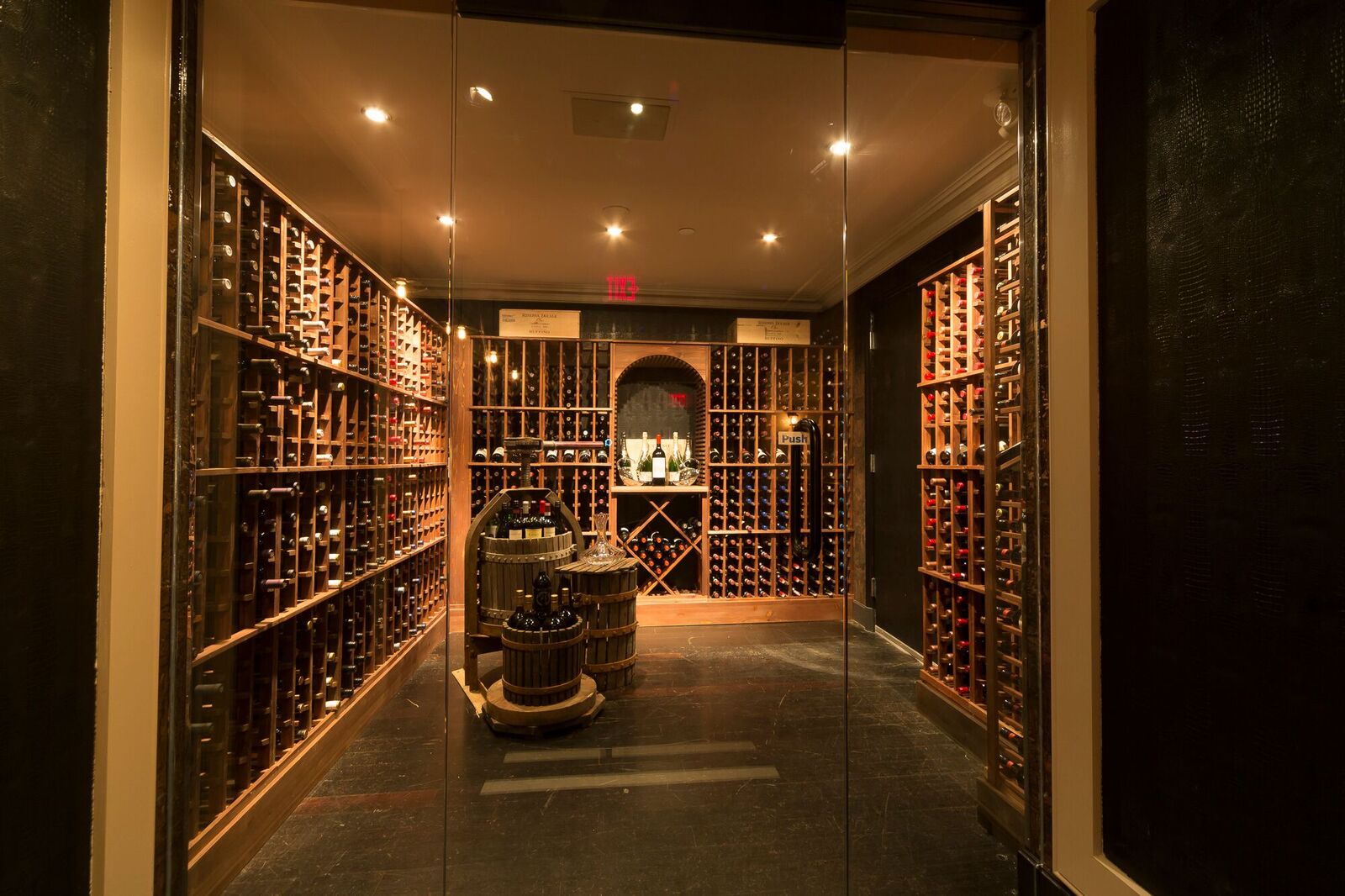 home for
a fine lunch or midnight raid on the fridge. So,
too, Colorado lamb chops ($47.95)—four of
them—were hefty, succulent and full of flavor,
and it was even kind of sweet to see mint jelly
on the side.
home for
a fine lunch or midnight raid on the fridge. So,
too, Colorado lamb chops ($47.95)—four of
them—were hefty, succulent and full of flavor,
and it was even kind of sweet to see mint jelly
on the side.
I did, out of professional
duty, order seafood—a three-pound lobster
($94.95)—but was told the kitchen has only two
per night and both were gone before I got there
at 7:15 p.m. As lobsters can live in cold
storage for a few days, I didn’t quite
understand why only two would be on hand. Frozen
lobster tails ($74.95), though available, are
not a reasonable option.
Side dishes (below)
include good, substantial French fries ($9.95)
and sautéed garlic-rich spinach ($11.95). Next
time I’m going for the onion rings and truffled
cream corn.
Desserts for the most part
are made off-premises, but if you’re still
starving, there’s pecan and Key lime pies and
the inevitable tiramisu. They really should make
the desserts on premises, as many new
steakhouses now do.
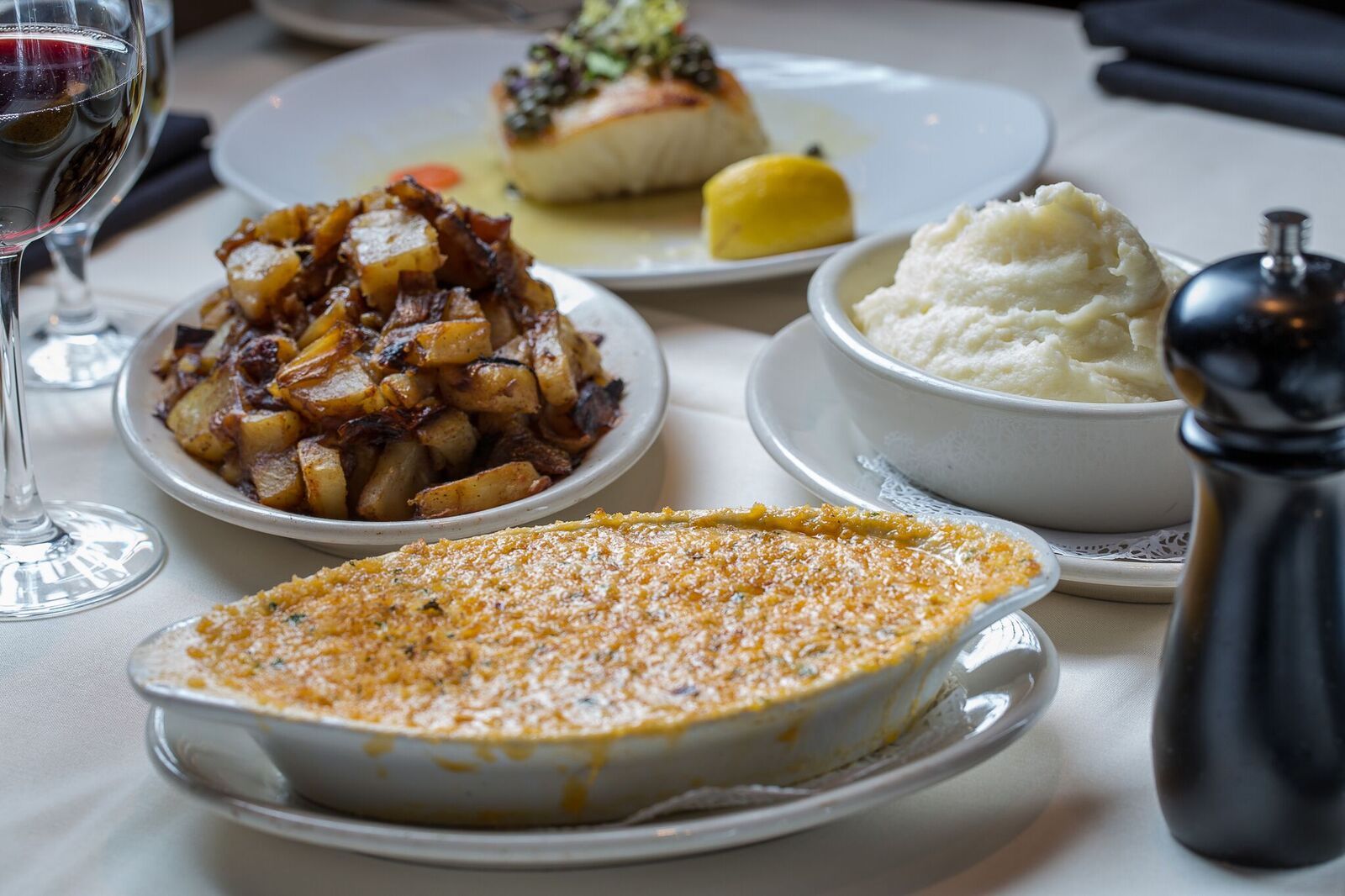 The
wine cellar at Angus Club is a beauty (above), and
the list itself has breadth and depth, not top
heavy with trophy wines but not rife with many
bottlings under $50.
The
wine cellar at Angus Club is a beauty (above), and
the list itself has breadth and depth, not top
heavy with trophy wines but not rife with many
bottlings under $50.
With so many choices of
steakhouses of every stripe in NYC, everyone
gets to pick their favorite based on what they
value most.
Since all the top steakhouses serve very
high quality beef, for many people it’s the
meeting and greeting that can make all the
difference in choosing where to eat. Fortunately,
NYC has several steakhouses that put a premium
on good service and guest rapport, and for that
Angus Club proves nightly why its guests are as
faithful as they are.
Open for lunch Mon.-Fri., for
dinner nightly.
❖❖❖
 PINOT
NOIR FIRST
PINOT
NOIR FIRST AND FOREVER THE
SOKOL-BLOSSER WAY
By John Mariani
Alex Sokol Blosser may very
well be the first west coast winemaker
I’ve interviewed in NYC who wore a necktie
to dinner.
Hell, he may be the only one to own
a necktie.
And I thought that gesture meant
something, part of the key to Sokol
Blosser’s pinot noirs, made in Dundee,
Oregon. 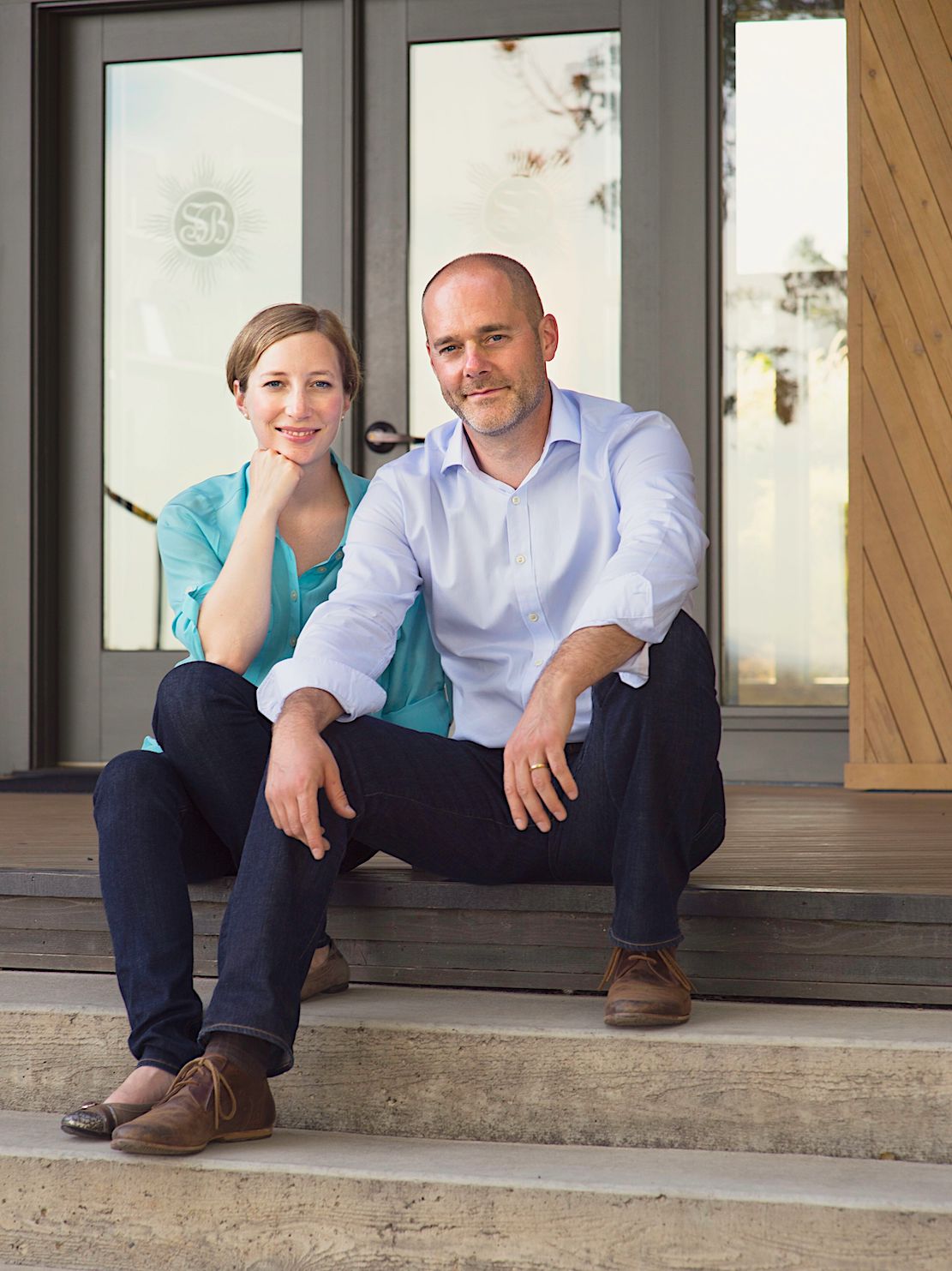
As conventional wisdom
goes, pinot noir is a famously finicky grape
from which one can produce an over-extracted
fruit bomb of a kind made by many California
wineries or a too delicate Burgundy of a style
even an aficionado may have trouble loving. Sokol
Blosser is wholly family owned—founded 45
years ago at a time when wineries were a
rarity in Oregon—and therefore Alex, along
with his sister, Alison, co-owner and CEO (right),
can make pinot noir the way they feel fits
into their own sensibility not as faux-Burgundy
or weak facsimile Russian River pinot noir.
“There are really two basic
types of soil we work with,” Alex said over
dinner at Lincoln Ristorante. “Volcanic soil
makes great pinot noir at higher elevations. But
below 300 feet the soil is full of calcium and
produces very vigorous vines, which in turn
make for good but not great pinot noir.”
Located on a certified
organic, 85-acre planted vineyard in Oregon’s
Dundee Hills sub appellation (they also buy
grapes from others), Sokol Blosser Winery was
founded by Alex and Alison’s parents, Bill and
Susan, with
all the enthusiasm that untutored youth could
muster.
“Dad worked another job and they really
didn’t know if the winery would be around in
twenty years,” Alex said. “That was 1971.”
 But the winery prospered
and became a template of Oregon’s future as a
wine region, now with more than 500 wineries,
most of them in the Willamette Valley. Today
Sokol Blosser is one of the most award-winning
and most respected estates in the west, not
least for its dedication to the environment
and sustainability.
But the winery prospered
and became a template of Oregon’s future as a
wine region, now with more than 500 wineries,
most of them in the Willamette Valley. Today
Sokol Blosser is one of the most award-winning
and most respected estates in the west, not
least for its dedication to the environment
and sustainability.
After college Alex was a
vineyard manager and salesman at Argyle
Winery, then sold insurance for a while,
before his mother offered him a job in sales. Along
with
his position as winemaker, Alex took over the
management of the winery in 2012.
Today Sokol Blosser makes a
wide array of wines, most of them intended to
be sold at the winery’s new tasting room in
Dundee or through on-line sales, from pinot
gris, riesling and chardonnay to a nine-grape
blend in magnum called Evolution. But
the family’s heart and soul, as well as its
considerable reputation, is built solidly on
pinot noir, of which they make about ten
stylizations from various vineyards.
In addressing the
differences between pinot noir-based
Burgundies and California pinto noirs, Alex
said, “In France the earthiness of their wines
make for a softer, rounder texture and more
minerality. The most important component in
pinot noir is acid; complexity hangs on that
acid. 
“In California the pinot
noir is picked riper to make a heavier, showy
style. The riper the grape the more phenolics,
and the sugar goes up and ferments into higher
alcohol.
Here in Oregon, we’re in the middle,
between France and California. We don’t have
the former’s soil but we don’t get
California’s heat. Our summers are drier,
and this year we had like two weeks of snow on
the ground. So we treat the grapes more
delicately.
In California they harvest in September
or October; we harvested in August last year.”
Over
a raviolo
with an egg yolk, ricotta and shavings of
black truffles,
we enjoyed a rosé made from pinot noir,
which had more body than most rosés of its
type.
“What I love about pinot
noir,” said Alex, “is the fruit, so I’ll
always accentuate that, and the acid gives
nuance and refinement. We’ve
really ratcheted back on the toasting of our
[French] oak barrels because we only want a
hint of that flavor in the bottle.”
With main courses of
grilled veal chops and braised lamb shoulder,
we drank three different low-yield pinot noirs
from Sokol Blosser: a 2014 Dundee Hills Estate
($38); a 2013 Big Tree Block ($70); and a 2010
Orchard Block ($70), each evidently fruit
forward.
The Dundee Hills Estate, which is very
well priced for a wine of this caliber, was
comprised of grapes from Dijon,
Pommard and Wadensvil clones, and if you 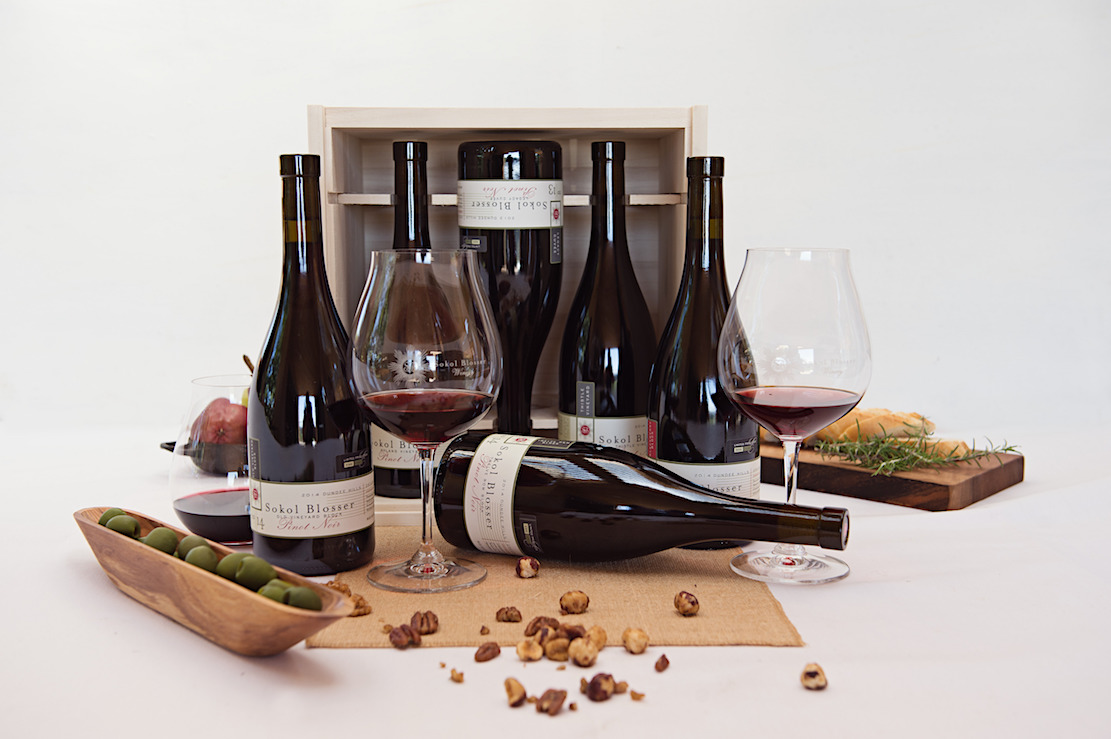 don’t
see the label, you might believe you are
drinking Aloxe-Corton.
don’t
see the label, you might believe you are
drinking Aloxe-Corton.
The 2013
Big Tree Block came from a very
dry year—23 inches of rain versus the normal
37—and temperatures were high; June brought
some rain, August humidity, all of which made
for tricky, careful winemaking. Picking
started late and ended only on October 10—the
longest period ever for a Sokol Blosser
harvest.
But the results were excellent, showing
forth the desirable fruit along with an
intensity balanced with good, fresh acid.
The
same conditions governed the harvesting of the
2013 Orchard Block Pinot Noir, made from a
single Dijon 777 clone, which shows a bit more
zest and elegance on the palate, along with
velvety texture and a tempered spice finish.
“I’m a baseball guy,” said
Alex, beginning an extended metaphor. “And in
a game, see,
I’m in the batter’s box and Mother
Nature is the pitcher. And no matter what she
throws at me, I want to put the bat on the
ball and put it where I want to put it. So
it’s a game of finesse.”
He paused to finish his
glass of wine and said, “Now, by comparison,
making cabernet sauvignon is . . . football.”
❖❖❖

MORE BANG FOR YOUR FOOD BUCK
A former Smith
& Wesson CEO opened a gun-themed restaurant
called Modern Round in Peoria, Arizona, and
the company says that already 23,000 people have
signed up for memberships, which cost $5 and allow
people to reserve tables set up in front of giant
screens, where customers can fire ultra-realistic
replica guns--including a replica AR-15 with a CO2
cartridge at a series of different scenarios that
include zombie-killing scenarios, duck-hunting
games, games where people shoot at pigs, and even
actual live-action police and military training
scenarios.

JITTERBUGGING TILES AND THAT
MADCAP GAL NAMED GINGERLY SASHAY?
“The design of the place. . . is posh.
Part the gray-velvet cold-blocking curtains at the
entrance, and you will feel like Alice tumbling onto a
dramatic stage set. Gray and white tiles jitterbug
across the floor, palm trees evoke a land of serenity. .
. . One evening, Zakarian spent the evening cruising the
dining room, with its long, narrow space between rows of
tables, through which the wait staff had to gingerly
sashay from kitchen to table.”—Rosemarie T. Anner, “The
National,” Westchester
Magazine (3/7/16).
Any of John Mariani's books below may be ordered from amazon.com.
 The
Hound in Heaven (21st Century Lion Books)
is a novella, and for anyone who loves dogs,
Christmas, romance, inspiration, even the supernatural, I
hope you'll find this to be a treasured favorite.
The story concerns how, after a New England teacher,
his wife and their two daughters adopt a stray puppy found
in their barn in northern Maine, their lives seem full of
promise. But when tragedy strikes, their wonderful dog
Lazarus and the spirit of Christmas are the only things
that may bring his master back from the edge of
despair.
The
Hound in Heaven (21st Century Lion Books)
is a novella, and for anyone who loves dogs,
Christmas, romance, inspiration, even the supernatural, I
hope you'll find this to be a treasured favorite.
The story concerns how, after a New England teacher,
his wife and their two daughters adopt a stray puppy found
in their barn in northern Maine, their lives seem full of
promise. But when tragedy strikes, their wonderful dog
Lazarus and the spirit of Christmas are the only things
that may bring his master back from the edge of
despair. WATCH THE VIDEO!
“What a huge surprise turn this story took! I was completely stunned! I truly enjoyed this book and its message.” – Actress Ali MacGraw
“He had me at Page One. The amount of heart, human insight, soul searching, and deft literary strength that John Mariani pours into this airtight novella is vertigo-inducing. Perhaps ‘wow’ would be the best comment.” – James Dalessandro, author of Bohemian Heart and 1906.
“John Mariani’s Hound in Heaven starts with a well-painted portrayal of an American family, along with the requisite dog. A surprise event flips the action of the novel and captures us for a voyage leading to a hopeful and heart-warming message. A page turning, one sitting read, it’s the perfect antidote for the winter and promotion of holiday celebration.” – Ann Pearlman, author of The Christmas Cookie Club and A Gift for my Sister.
“John Mariani’s concise, achingly beautiful novella pulls a literary rabbit out of a hat – a mash-up of the cosmic and the intimate, the tragic and the heart-warming – a Christmas tale for all ages, and all faiths. Read it to your children, read it to yourself… but read it. Early and often. Highly recommended.” – Jay Bonansinga, New York Times bestselling author of Pinkerton’s War, The Sinking of The Eastland, and The Walking Dead: The Road To Woodbury.
“Amazing things happen when you open your heart to an animal. The Hound in Heaven delivers a powerful story of healing that is forged in the spiritual relationship between a man and his best friend. The book brings a message of hope that can enrich our images of family, love, and loss.” – Dr. Barbara Royal, author of The Royal Treatment.
 |
The Encyclopedia of American Food and Drink by John F. Mariani (Bloomsbury USA, $35) Modesty forbids me to praise my own new book, but let me proudly say that it is an extensive revision of the 4th edition that appeared more than a decade ago, before locavores, molecular cuisine, modernist cuisine, the Food Network and so much more, now included. Word origins have been completely updated, as have per capita consumption and production stats. Most important, for the first time since publication in the 1980s, the book includes more than 100 biographies of Americans who have changed the way we cook, eat and drink -- from Fannie Farmer and Julia Child to Robert Mondavi and Thomas Keller. "This book is amazing! It has entries for everything from `abalone' to `zwieback,' plus more than 500 recipes for classic American dishes and drinks."--Devra First, The Boston Globe. "Much needed in any kitchen library."--Bon Appetit. |
"Eating Italian will never be the same after reading John Mariani's entertaining and savory gastronomical history of the cuisine of Italy and how it won over appetites worldwide. . . . This book is such a tasteful narrative that it will literally make you hungry for Italian food and arouse your appetite for gastronomical history."--Don Oldenburg, USA Today. "Italian
restaurants--some good, some glitzy--far
outnumber their French rivals. Many of
these establishments are zestfully described
in How Italian Food Conquered the World, an
entertaining and fact-filled chronicle by
food-and-wine correspondent John F.
Mariani."--Aram Bakshian Jr., Wall Street
Journal.
"Equal parts
history, sociology, gastronomy, and just
plain fun, How Italian Food Conquered the
World tells the captivating and delicious
story of the (let's face it) everybody's
favorite cuisine with clarity, verve and
more than one surprise."--Colman Andrews,
editorial director of The Daily
Meal.com. "A fantastic and fascinating
read, covering everything from the influence
of Venice's spice trade to the impact of
Italian immigrants in America and the
evolution of alta cucina. This book will
serve as a terrific resource to anyone
interested in the real story of Italian
food."--Mary Ann Esposito, host of PBS-TV's
Ciao
Italia. "John Mariani has written the
definitive history of how Italians won their
way into our hearts, minds, and
stomachs. It's a story of pleasure over
pomp and taste over technique."--Danny Meyer,
owner of NYC restaurants Union Square
Cafe, The Modern, and Maialino.
|
 |
 |
 |
 |
 |
 |
 |
 |
 Everett Potter's Travel Report:
Everett Potter's Travel Report: 
 Eating Las Vegas
JOHN CURTAS has been covering the Las Vegas
food and restaurant scene since 1995. He is
the co-author of EATING LAS VEGAS – The 50
Essential Restaurants (the fourth
edition of which will be published in early
2016), as well as the author of the Eating Las
Vegas web site: www.eatinglasvegas.
He can also be seen every Friday morning as
the “resident foodie” for Wake Up With the
Wagners on KSNV TV (NBC) Channel 3 in
Las Vegas.
Eating Las Vegas
JOHN CURTAS has been covering the Las Vegas
food and restaurant scene since 1995. He is
the co-author of EATING LAS VEGAS – The 50
Essential Restaurants (the fourth
edition of which will be published in early
2016), as well as the author of the Eating Las
Vegas web site: www.eatinglasvegas.
He can also be seen every Friday morning as
the “resident foodie” for Wake Up With the
Wagners on KSNV TV (NBC) Channel 3 in
Las Vegas.

MARIANI'S VIRTUAL GOURMET
NEWSLETTER is published weekly. Editor/Publisher: John
Mariani.
Editor: Walter Bagley. Contributing Writers: Christopher Mariani,
Robert Mariani, Misha Mariani, John A. Curtas, Geoff Kalish, Mort
Hochstein, and
Brian Freedman. Contributing Photographers: Galina
Dargery. Technical Advisor: Gerry McLoughlin.
To un-subscribe from this newsletter,click here.
© copyright John Mariani 2017

